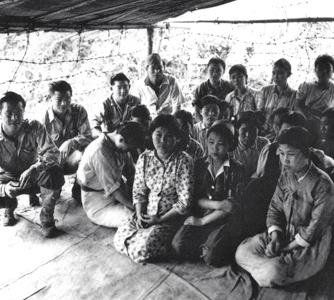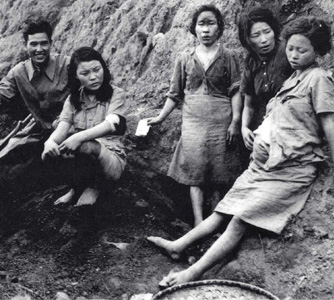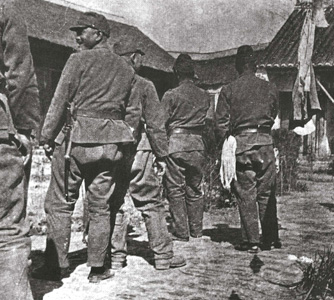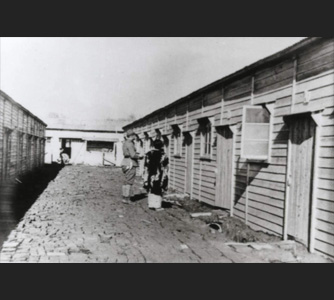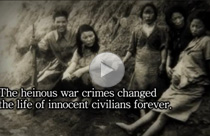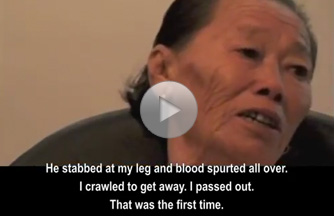Military Sexual Slavery
Overview
The first military comfort station was established in Shanghai in 1932 under the orders of two generals on staff of the Shanghai Expeditionary Army, following the massive rape and murder of Chinese women provoking fierce anger amongst Chinese people. Comfort stations were established in all war zones rapidly, especially after the Nanjing Massacre in 1937, where countless women were raped and murdered. As the Japanese Military expanded their occupation, comfort stations were installed in China, Hong Kong, Amoy, French Indochina, the Philippines, Malay, Singapore, British Borneo, Dutch Indies, Burma and many more locations. These comfort houses belong directly to the emperor, and comfort women would be shipped like military supplies to comfort stations established at war fronts.
The girls and young women were drafted into military sexual slavery by all kinds of methods, such as deception, coercion, lying, abducting or taken by force. Sometimes the Japanese military collaborated with local operators and recruiters to draft comfort women. Many of the victims were promised heavenly opportunities to work for the Japanese as factory workers or nurses and would earn a considerable amount of money to free their families from poverty. Many young girls were simply taken away from their family by force or captured on the street to become sex slaves for the Japanese soldiers. Life as sexual slaves in military brothels degraded these women's physical and mental health severely. They were forced to serve about 30 soldiers daily on weekdays and up to 50 on weekends, completely rotting away their dignity and spirit. It was common to receive severe beatings from supervisors and soldiers if one put up a fierce resistance. Within the walls of those comfort stations, many perished from diseases, physical torture and were killed once they became useless, and a fresh supply of women would be ready to replace them.
When the Japanese were defeated, most of these "comfort women" were simply abandoned on site. Some committed suicide, while others struggled in poverty, humiliation and shame upon returning to their home country. Many of the survivors could not live a normal life, have family and children due to the physical, emotional and psychological trauma they suffered from their ordeals. Because the Japanese government destroyed much of the documents concerning Military Sexual Slavery, the issue of "comfort women" remained hidden from public.
In 1991, former Korean comfort women Kim Hak Sun filed the first-ever lawsuit against the Japanese Government for its war crimes against women. Many others began to end their own silence and demands justice be brought before them. To this date, the Japanese government has offered neither public apology for implementing the "comfort system", nor reparations to the victims of Japanese Military Sexual Slavery. All "comfort women" law suits have been rejected, and in 2007, the Japanese Prime Minister Shinzo Abe openly denied that the military had forced women into sexual slavery during WWII and stated that "there is no evidence to prove there was coercion". [Source: Toronto ALPHA]
Fact Sheet on Japanese Military “Comfort Women”
An Asia Pacific Journal Feature (http://japanfocus.org/events/view/253) including facts, online resources, book list as well as Statements, Reports and Resolutions Download PDFTestimonies
Placeholder

Historical Scenes
